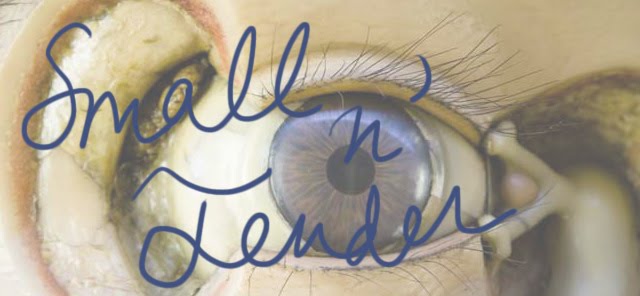"Well," said the orang-utang, "I just wanted to know if I was my brother's keeper or my keeper's brother."

I went for a job interview at the Zoo for the ZooTeen Instructor position. The program is amazing if you're sixteen- teens can volunteer one day a week and learn about how to communicate wildlife information to humans. They stand in front of exhibits and explain the lifestyle and habits of each creature. The position appeared to involve mostly strolling the grounds and making sure teens aren't sexting during their shift.
I got a free tour after the interview with my interviewer, Chris Kline, Director of Onsite Interpretation, and we discussed the various merits and fallbacks of the zoo as an instution. I'm told the amount that visitors ask if zebras lay eggs is staggeringly frequent, so they certainly have an educational job to do. Zoos in their modern iterations are touted as important for conservation, becauase presumably they increase the robustness of species endangered in the wild by providing safe spaces and breeding habitats for them. I believe that zoo people believe in what they're doing, and believe it's for the good of the animals. For example, the chance of white-phase (either Bengal or Siberian) tigers being born in the wild is about 1 in 5,000, as it is caused by a double recessive gene. The Nashville Zoo has a White Bengal tiger. All white tigers in zoos right now originate from an individual captured in the 1950's, therefore despite zoos introducing new genes to prevent inbreeding, it persists and has caused a prevalence of hip dysplasia in many white tiger individuals.
 The Nashville Zoo boasts being the topmost breeder of the giant anteater in the country. Anteaters are notoriously difficult to breed, but apparently are mating like rabbits at the zoo here. They also have successful breeding programs for Rhinoceros Hornbills, and are one of only a handful for Clouded Leapords. They also have had success with breeding Puerto Rican Crested Toads and Panamanian Golden Frogs, which are now believed to be extinct in the wild.
The Nashville Zoo boasts being the topmost breeder of the giant anteater in the country. Anteaters are notoriously difficult to breed, but apparently are mating like rabbits at the zoo here. They also have successful breeding programs for Rhinoceros Hornbills, and are one of only a handful for Clouded Leapords. They also have had success with breeding Puerto Rican Crested Toads and Panamanian Golden Frogs, which are now believed to be extinct in the wild. At the Schimdt's Guenon habitat, also called a Red Monkey, there is an odd, difficult to see electric grass between the monkeys and the chain link fence to prevent them from reaching their hands out to visitors. Visitors holding hands with monkeys would perhaps cause legal hazards for the zoo. The electric grass shocks their little monkey hands if they try to reach out. The Schmidt's Guenon has huge cheek pouches it can fill with food while foraging and then retire to dine on the food stored in its cheeks. One monkey came close to the grass and played around near it, and I watched it get slightly zinged, remember the infernal electric grass, give it a disdainful look, and retract its hand slightly. The monkey was going to give the electric grass the room it evidently demanded, but little else. How's that for anthropomorphization?! I thought about how we like to assume animals are just like us while at the zoo. A couple of women walked up to the exhibit and began talking about the animals excitedly, projecting a whole bundle of emotions and behaviors on them, even applying humans concepts of beauty to them. Apparently they didn't appreciate the Schmidt's Guenon's looks. For a great article on this concept, see Tom Tyler's essay "If Horses Had Hands" http://www.criminalanimal.org/people/writings/cyberchimp/horses.htm
At the Schimdt's Guenon habitat, also called a Red Monkey, there is an odd, difficult to see electric grass between the monkeys and the chain link fence to prevent them from reaching their hands out to visitors. Visitors holding hands with monkeys would perhaps cause legal hazards for the zoo. The electric grass shocks their little monkey hands if they try to reach out. The Schmidt's Guenon has huge cheek pouches it can fill with food while foraging and then retire to dine on the food stored in its cheeks. One monkey came close to the grass and played around near it, and I watched it get slightly zinged, remember the infernal electric grass, give it a disdainful look, and retract its hand slightly. The monkey was going to give the electric grass the room it evidently demanded, but little else. How's that for anthropomorphization?! I thought about how we like to assume animals are just like us while at the zoo. A couple of women walked up to the exhibit and began talking about the animals excitedly, projecting a whole bundle of emotions and behaviors on them, even applying humans concepts of beauty to them. Apparently they didn't appreciate the Schmidt's Guenon's looks. For a great article on this concept, see Tom Tyler's essay "If Horses Had Hands" http://www.criminalanimal.org/people/writings/cyberchimp/horses.htmNext visit I'll check out the elephant habitat, where there apparently is a kind of sponge under the soil so it's cushier for them. Behave!




















